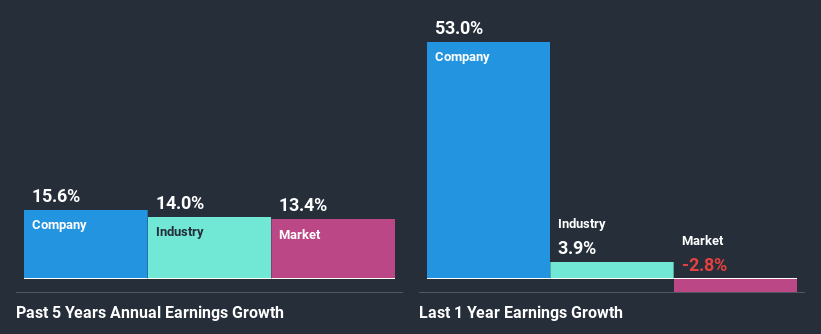Will Weakness in Essex Property Trust, Inc.'s (NYSE:ESS) Stock Prove Temporary Given Strong Fundamentals?

Essex Property Trust (NYSE:ESS) has had a rough three months with its share price down 11%. However, stock prices are usually driven by a company’s financial performance over the long term, which in this case looks quite promising. Specifically, we decided to study Essex Property Trust's ROE in this article.
ROE or return on equity is a useful tool to assess how effectively a company can generate returns on the investment it received from its shareholders. In short, ROE shows the profit each dollar generates with respect to its shareholder investments.
See our latest analysis for Essex Property Trust
How Is ROE Calculated?
ROE can be calculated by using the formula:
Return on Equity = Net Profit (from continuing operations) ÷ Shareholders' Equity
So, based on the above formula, the ROE for Essex Property Trust is:
10% = US$660m ÷ US$6.4b (Based on the trailing twelve months to June 2020).
The 'return' is the income the business earned over the last year. Another way to think of that is that for every $1 worth of equity, the company was able to earn $0.10 in profit.
What Is The Relationship Between ROE And Earnings Growth?
So far, we've learned that ROE is a measure of a company's profitability. Depending on how much of these profits the company reinvests or "retains", and how effectively it does so, we are then able to assess a company’s earnings growth potential. Assuming all else is equal, companies that have both a higher return on equity and higher profit retention are usually the ones that have a higher growth rate when compared to companies that don't have the same features.
Essex Property Trust's Earnings Growth And 10% ROE
At first glance, Essex Property Trust seems to have a decent ROE. Especially when compared to the industry average of 5.1% the company's ROE looks pretty impressive. This probably laid the ground for Essex Property Trust's moderate 16% net income growth seen over the past five years.
Next, on comparing Essex Property Trust's net income growth with the industry, we found that the company's reported growth is similar to the industry average growth rate of 14% in the same period.
Earnings growth is an important metric to consider when valuing a stock. The investor should try to establish if the expected growth or decline in earnings, whichever the case may be, is priced in. By doing so, they will have an idea if the stock is headed into clear blue waters or if swampy waters await. What is ESS worth today? The intrinsic value infographic in our free research report helps visualize whether ESS is currently mispriced by the market.
Is Essex Property Trust Using Its Retained Earnings Effectively?
Essex Property Trust seems to be paying out most of its income as dividends judging by its three-year median payout ratio of 55%, meaning the company retains only 45% of its income. However, this is typical for REITs as they are often required by law to distribute most of their earnings. In spite of this, the company was able to grow its earnings by a fair bit, as we saw above.
Moreover, Essex Property Trust is determined to keep sharing its profits with shareholders which we infer from its long history of paying a dividend for at least ten years. Upon studying the latest analysts' consensus data, we found that the company is expected to keep paying out approximately 60% of its profits over the next three years. Still, forecasts suggest that Essex Property Trust's future ROE will drop to 5.4% even though the the company's payout ratio is not expected to change by much.
Conclusion
In total, we are pretty happy with Essex Property Trust's performance. In particular, its high ROE is quite noteworthy and also the probable explanation behind its considerable earnings growth. Yet, the company is retaining a small portion of its profits. Which means that the company has been able to grow its earnings in spite of it, so that's not too bad. Having said that, on studying current analyst estimates, we were concerned to see that while the company has grown its earnings in the past, analysts expect its earnings to shrink in the future. To know more about the latest analysts predictions for the company, check out this visualization of analyst forecasts for the company.
This article by Simply Wall St is general in nature. It does not constitute a recommendation to buy or sell any stock, and does not take account of your objectives, or your financial situation. We aim to bring you long-term focused analysis driven by fundamental data. Note that our analysis may not factor in the latest price-sensitive company announcements or qualitative material. Simply Wall St has no position in any stocks mentioned.
Have feedback on this article? Concerned about the content? Get in touch with us directly. Alternatively, email editorial-team@simplywallst.com.

 Yahoo Finance
Yahoo Finance 
